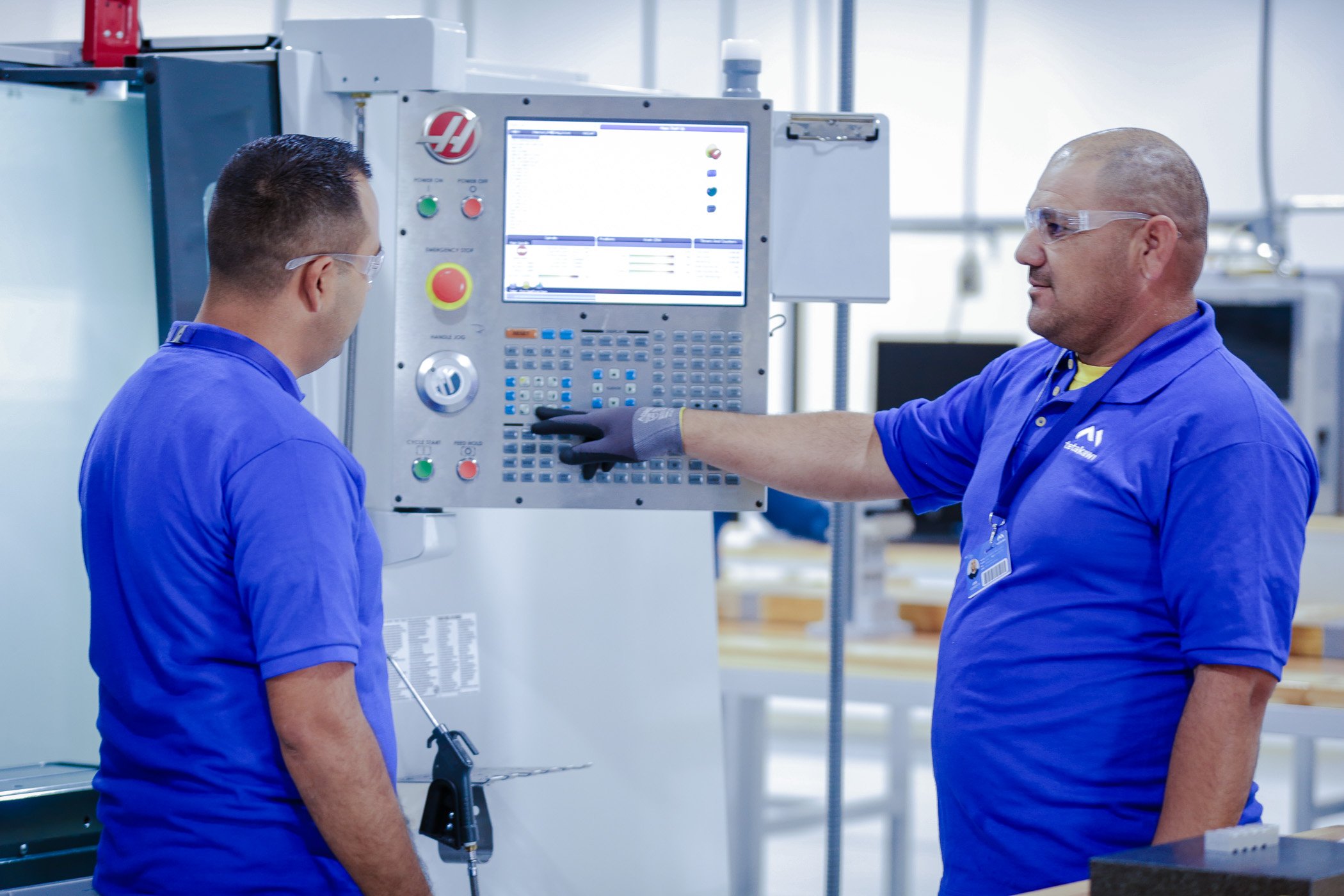No matter how much automation you put in to streamline your operations, manufacturing is a labor-intensive business. That means labor costs are likely a large share of your overhead, accounting for as much as 70 percent of total business costs. It’s no wonder that companies often look at ways to reduce labor costs as the first step in a cost-reduction strategy.
This is where manufacturing in Mexico can serve as a powerful competitive advantage. Companies who choose to increase their capacity by expanding into Mexico quickly realize that low cost doesn't have to mean low quality. In fact, by reducing labor costs, many companies find that they can invest more in training their workers both in Mexico and at home. The end result is high-quality products at a fraction of the cost.
Implementing a cost reduction strategy is essential for manufacturing companies seeking to maintain competitiveness in today's market. Expanding operations into Mexico presents a compelling opportunity for companies to leverage lower labor costs without compromising on quality.
By relocating manufacturing activities to Mexico, companies can effectively reduce their overhead expenses while still delivering high-quality products to their customers. Moreover, partnering with a shelter services provider in Mexico can further optimize cost reduction efforts by streamlining administrative processes and providing access to cost-effective labor pools.
With a strategic focus on cost reduction, companies can position themselves for long-term success in the global marketplace while maintaining profitability and operational efficiency. To understand how expanding manufacturing into Mexico can help your company, this blog post will provide a breakdown below of typical Mexico labor rates for manufacturing
Breakdown of Manufacturing Wages in the United States vs. Mexico

First, let’s take a look at comparable wages for manufacturing in Mexico versus in the United States.
As in any country, wages will range depending on the region and the complexity of the product being manufactured. However, the following breakdown of average salaries in the U.S. versus Mexico will give you an idea of what you might expect to pay for labor.
|
Manufacturing Wages in the United States versus Mexico fully fringed hourly wages listed in USD |
||
|
Position |
U.S. (National averages based on data from the Bureau of Labor Statistics) |
Mexico (National averages based on data from Tetakawi Field Studies) |
|
Direct manufacturing labor |
$17.42 |
$4.70 |
|
Painters |
$21.11 |
$5.66 |
|
Welders |
$20.65 |
$7.10 |
|
Machinists |
$23.57 |
$7.30 |
|
CNC operator |
$22.23 |
$7.09 |
|
Production manager |
$56.62 |
$45.13 |
To get a sense of what wages would look like for factory workers in Mexico, use our Mexico Payroll cost calculator or listen to our Manufacturing in Mexico Podcast below, which provides an overview of labor costs in Mexico:
Accounting for Benefits in Mexico
There are also costs beyond wages to consider. Employees across most regions in Mexico expect some level of benefits beyond their base wage. Statutory benefits are outlined by Mexico’s Federal Labor Law. These include 12 or more days of paid time off, profit-sharing percentages, the end-of-year aguinaldo bonus, and pension contributions. In cities where manufacturing is particularly dense, many companies offer additional benefits to more easily secure and retain talent. While U.S. employers might be surprised at the need to pay for transportation or meals at their Mexico operations, these costs are hardly overwhelming. Even with these expectations, labor costs in Mexico remain highly competitive compared to those in the United States.
Onboarding and Training Costs
Manufacturers should also account for hiring costs. According to Glassdoor, the average cost to hire an employee in the United States is $4,100.
This includes the cost of advertising the position, performing background checks, salary for hiring and training managers, and the cost of bringing new hires up to speed. In Mexico, many of these costs can be offset by working with a shelter services provider who can handle recruitment for the region you hope to target.
Manufacturers in Mexico can also benefit from working with an established training venue. The number of such training centers continues to grow, particularly around industry clusters. These venues may pair technical training with hands-on experience in manufacturing, much like an internship. This is a direction the federal government continues to push with investment in vocational training and programs that steer today’s high school students to technical degrees. With Mexico’s population poised to grow significantly, this type of investment is developing a strong future workforce.
Healthcare and Retirement Costs
Employers in the United States often struggle to keep up with the rising cost of health insurance in the United States, where employer-provided health coverage averages $22,000 each year. In Mexico, healthcare is covered by a blend of subsidized and affordable employer-sponsored healthcare. In comparison, U.S.-based employees living and working in Mexico might expect to pay around $5,900 annually for comprehensive health insurance.
Employers are also required to pay into employee pensions. As of 2023, employer contributions are set to increase from a total of 5.15 percent to 13.87 percent at set intervals through 2030. Many employers also opt to offer supplementary pensions to attract and retain workers.
Cost Of Living in Mexico vs. U.S.

The lower labor costs available in Mexico are a result of the typically lower cost of living compared to those in the United States. The living wage in Mexico averages around MEX $13,177 (USD $677) to $17,849 (USD $917) per month, according to the Global Living Wage Coalition. In the United States, a monthly living wage is closer to $3,900, per data from MIT’s Living Wage Calculator. Due to this difference, manufacturers find they can provide their Mexico labor force with a comfortable living at a comparatively lower rate.
What would it cost your company to manufacture in Mexico?
While the averages noted above can help manufacturers better understand the potential for savings, these estimates are only a starting point. Labor costs will vary depending on your targeted region, the level of local competition, and the potential workforce from which to recruit. To better understand regional labor costs, contact Tetakawi to schedule a complimentary cost model.
Subscribe
Sign up and stay informed with tips, updates, and best practices for manufacturing in Mexico.




.jpg)

